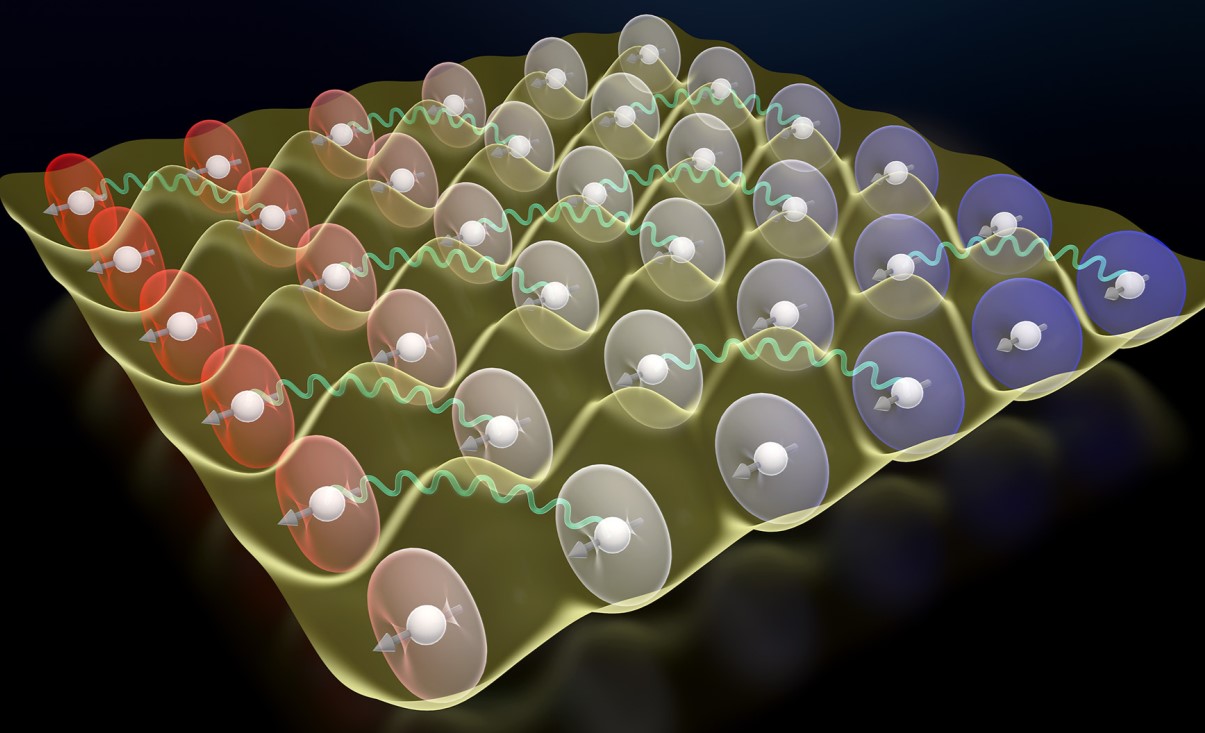
Dipole-dipole interactions are a type of intermolecular force that occur between molecules with permanent dipoles. These forces play a crucial role in determining the physical properties of substances, such as boiling points, melting points, and solubility. But what exactly are dipole-dipole interactions, and why should you care? Dipole-dipole interactions arise when the positive end of one polar molecule is attracted to the negative end of another. This attraction can significantly influence how molecules behave in different states of matter. Understanding these interactions can help explain why water has a high boiling point or why certain substances mix well together. Dive into these 27 facts to get a deeper grasp of the fascinating world of dipole-dipole interactions and see how they impact everyday life.
Understanding Dipole-Dipole Interactions
Dipole-dipole interactions are a type of intermolecular force that occurs between polar molecules. These forces play a crucial role in determining the physical properties of substances. Let's dive into some fascinating facts about these interactions.
-
Dipole-dipole interactions occur between polar molecules. Polar molecules have a partial positive charge on one end and a partial negative charge on the other, creating a dipole.
-
The strength of dipole-dipole interactions depends on the polarity of the molecules. More polar molecules have stronger dipole-dipole interactions.
-
These interactions are weaker than ionic bonds but stronger than London dispersion forces. This makes them an intermediate force in terms of strength.
-
Dipole-dipole interactions influence boiling and melting points. Substances with strong dipole-dipole interactions typically have higher boiling and melting points.
-
They play a role in the solubility of substances. Polar molecules tend to dissolve well in polar solvents due to dipole-dipole interactions.
How Dipole-Dipole Interactions Work
Understanding the mechanics of dipole-dipole interactions can help explain why they are so important in chemistry and biology.
-
Dipole-dipole interactions arise from electrostatic forces. The partial positive charge of one molecule is attracted to the partial negative charge of another.
-
The orientation of molecules affects the strength of the interaction. Molecules must align properly for the dipole-dipole interaction to be effective.
-
These interactions can occur in both liquids and solids. In liquids, molecules are free to move, while in solids, they are fixed in place.
-
Temperature can influence dipole-dipole interactions. Higher temperatures can weaken these interactions by increasing molecular motion.
-
Dipole-dipole interactions are directional. The force is strongest when the dipoles are aligned head-to-tail.
Examples of Dipole-Dipole Interactions
Real-world examples can help illustrate how dipole-dipole interactions manifest in everyday substances.
-
Water (H₂O) is a classic example of a molecule with dipole-dipole interactions. The oxygen atom has a partial negative charge, while the hydrogen atoms have partial positive charges.
-
Hydrogen chloride (HCl) also exhibits dipole-dipole interactions. The chlorine atom is more electronegative, creating a dipole with the hydrogen atom.
-
Acetone (C₃H₆O) molecules interact through dipole-dipole forces. The carbonyl group (C=O) creates a dipole moment.
-
Formaldehyde (CH₂O) is another example. The carbon-oxygen double bond creates a significant dipole.
-
Ethanol (C₂H₅OH) has both dipole-dipole interactions and hydrogen bonding. The hydroxyl group (OH) contributes to its polarity.
Importance in Biological Systems
Dipole-dipole interactions are not just limited to chemistry; they are vital in biological systems as well.
-
Proteins rely on dipole-dipole interactions for their structure. These forces help maintain the secondary and tertiary structures of proteins.
-
DNA stability is partly due to dipole-dipole interactions. The nitrogenous bases in DNA interact through these forces.
-
Cell membranes are influenced by dipole-dipole interactions. The polar heads of phospholipids interact with water molecules.
-
Enzyme-substrate binding involves dipole-dipole interactions. These forces help enzymes recognize and bind to their substrates.
-
Hormone-receptor interactions are also mediated by dipole-dipole forces. These interactions help hormones bind to their specific receptors.
Factors Affecting Dipole-Dipole Interactions
Several factors can influence the strength and effectiveness of dipole-dipole interactions.
-
Molecular size can affect dipole-dipole interactions. Larger molecules may have more significant dipole moments.
-
Electronegativity differences between atoms create stronger dipoles. Greater differences result in stronger dipole-dipole interactions.
-
Molecular shape can influence these interactions. Linear molecules may align better than branched ones.
-
Presence of other intermolecular forces can affect dipole-dipole interactions. Hydrogen bonding can enhance or compete with dipole-dipole forces.
-
Solvent effects can influence dipole-dipole interactions. Polar solvents can enhance these interactions, while nonpolar solvents can weaken them.
Applications of Dipole-Dipole Interactions
Understanding dipole-dipole interactions has practical applications in various fields.
-
Pharmaceuticals use dipole-dipole interactions in drug design. These forces help drugs bind to their targets.
-
Material science relies on dipole-dipole interactions. These forces influence the properties of polymers and other materials.
Final Thoughts on Dipole-Dipole Interactions
Dipole-dipole interactions play a crucial role in the behavior of molecules. These forces, which occur between polar molecules, influence everything from boiling points to solubility. Understanding these interactions helps explain why water has such unique properties and why certain substances mix well while others don't.
These interactions are just one piece of the puzzle in the vast world of chemistry, but they're a significant one. By grasping how dipole-dipole forces work, we gain insight into the molecular world around us. This knowledge can be applied in various fields, from developing new materials to understanding biological processes.
So, next time you see water boiling or oil separating from vinegar, remember the dipole-dipole interactions at play. They might be invisible, but their effects are everywhere.
Was this page helpful?
Our commitment to delivering trustworthy and engaging content is at the heart of what we do. Each fact on our site is contributed by real users like you, bringing a wealth of diverse insights and information. To ensure the highest standards of accuracy and reliability, our dedicated editors meticulously review each submission. This process guarantees that the facts we share are not only fascinating but also credible. Trust in our commitment to quality and authenticity as you explore and learn with us.


